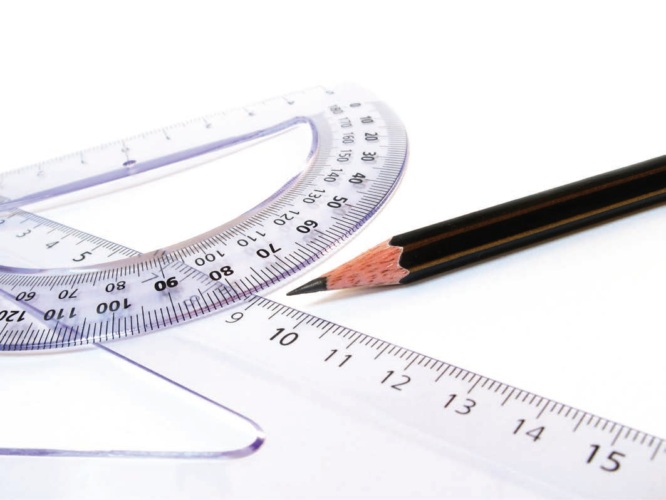Colm Kenny, landscape cost estimating expert, shares some tips and tricks on how to avoid the pitfalls of landscape tendering
As a contractor, receiving the news that yours is the winning tender on a landscape project can put a rare smile on your face. However, the grin can soon disappear after discovering that your winning tender is the result of an error on your part. With low profit margins required to win landscape work in the current competitive market, methodical and accurate tendering is vital for contractors. Developing and constantly applying a standard set of procedures that reduces the risks associated with quoting for work is important to achieve this success.
It is often too late when contractors discover that the tender sum for the job is too low or that they missed something within the Bills of Quantity (BOQ) or specification, or in fact have overlooked something on site that will have an impact on their intended programme of works. Contracts have been signed, materials ordered or indeed paid for upfront. What can a contractor do then? Walk away from the job? Damage their reputation? Let down their suppliers?
To avoid the consequences of inaccurate quotations and possible business failure, landscape contractors should be aware of the most common and often repeated estimating errors. Thus, they should have or implement a standard set of procedures for preparing and submitting a competitive but profitable tender.
UNDERSTANDING THE DESIGN & SPECIFICATION
If you don’t know exactly what work you are to undertake, how will you know what you are required to quote for? A clear understanding of the drawings and specifications is critical. A typical tender package includes a set of landscape drawings, a works specification and a BOQ. Once you receive the documents examine them thoroughly, highlighting any key pieces of information and make a note of any queries you may have regarding the scope of works or the specification. The specification is the one area that requires in-depth study as it is usually here where important information is overlooked.
‘By giving them the precise specification the risk to you is reduced as they are fully aware of what they are quoting’
If you receive the package by email make sure that you print out all the documents, including the drawings to scale if possible. It is easy to miss some important details if you are scrolling through a PDF on a computer screen. Familiarise yourself with the design, the nature of the works and the specification. I would also recommend that you contact the person responsible for the tender, be it the designer, the main contractor or the client directly. This will give you an opportunity to interact and raise relevant queries with the decision-maker who should be in a position to answer any questions you may have. If for some reason you decide not to quote for the works, contact them regardless to thank them for inviting you to tender and ask them to consider you for future projects.
SITE VISIT & INSPECTION
Assuming that the project is ready to go, the next step is to arrange a site visit. Do this during daylight and not on your way home from another job. If possible, arrange to meet the person that invited you to quote for the works. Again, this will give you an opportunity to gather additional information. Bring all the documents with you and walk through the design step by step, taking note of risks such as access dimensions and existing services. A camera is also a useful asset to have at your disposal for recording important pieces of information and recording what risks you identify on-site. Investigate your access route to ensure that any required machinery will be able to get in and out, and also examine where you will be able to park and store your materials. All this collected information will influence the price you charge for the job. One practical tip is to avoid visiting the site when it’s raining as you will only rush if you’re getting wet.
QUOTES FROM SUPPLIERS & SUBCONTRACTORS
Assuming you received a measured BOQ, the next step is to send off a list of required materials to suppliers. You should send the materials list to suppliers you have a good relationship with or have dealt with successfully on past projects. Two or three suppliers are sufficient. If possible send the suppliers the list in a form they can edit such as Excel or Word, as it will save time for both them and you. If reproducing the list in a digital format, take care not to omit any items or details.
“Get all your quotes in writing so you have a record of the supply cost. This will eliminate any conflict over money during the course of the project”
For soft landscape materials make sure that you read the relevant section of the specification prior to seeking supply prices. The list of materials should include the name, quantity, description, form, pot size and height. For hard landscape materials measured on the BOQ, each item should list the name, a description including dimensions, the volume or number of units required. It is important to note that the BOQ doesn’t take waste into account. For example, the project may include 100m2 of paving as measured from the drawings. However, experienced contractors know that there could be up to 10% waste for cuts, breakages, etc. When receiving quotations for hard materials it may be beneficial to receive a quote for the required amount plus an allowance for waste. This price can be used as a foundation for calculating your tender rates. If small quantities of additional materials are required once the project is underway, your supplier may sell you these materials at a higher rate as transport costs etc will be passed on to you. If you have not taken account of these costs, they will eat into your profit margin.
Likewise, when contacting subcontractors to solicit bids do so as early as is possible. Solicit at least three subcontractors for each separate scope of work. Help those who might give your company an advantage by giving them as much information as possible. Give them the specification of the works that you wish for them to quote for. By giving them the precise specification, the risk to you is reduced as they are fully aware of what they are quoting. Get all your quotes in writing so you have a record of the supply cost. This will eliminate any conflict over money during the course of the project.
“It is important to note that the BOQ doesn’t take waste into account”
Once you have received the supply quotes, analyse them carefully. If you have then in a format such as Excel, it should be possible to compare them side by side. Don’t just look at the bottom line; study the individual items to see where there is a large price variation between suppliers. Are they pricing to spec? If there is a large discrepancy between suppliers, contact the lower-priced supplier to see if the rate quoted is correct and to specification. Obviously, if you are satisfied that all suppliers are pricing the same materials to the same spec and you are happy to deal with the lowest priced tender, you can use their rates as your base rate when building up your tender rates.
RATE PRODUCTION
Producing a rate for each item contained in the BOQ is the main area where mistakes will be made. Some rates will be too high making you uncompetitive while a low rate may cost you money. Striking a balance is a hard thing to accomplish. The most accurate method to produce rates is to use first principles estimating technique. This process requires having accurate knowledge of all the costs associated with the works. Anticipated direct and indirect costs of the resources required to complete the project as well as your profit combine to calculate the item rate. Direct cost resources include the machinery required, labour costs, materials and also subcontractor costs, while the indirect costs are your general overheads and operating costs. Once you have all the information gathered you will be in a position to produce a rate by tallying both the direct and indirect cost and adding on your desired profit percentage. What percentage you choose is up to you but it should be sufficient to give you a decent profit margin to continue on in the business. Using this approach will ensure that you produce an accurate, accountable and competitive rate.
TENDER COMPILATION & SUBMISSION
Prior to finalising the tender document a final check is essential to reduce inaccuracies. Review specifications, drawings and notes for any scope of work that may have been overlooked. Once this is done and you are satisfied with your compiled rates, fill out the BOQ carefully. The most common errors that occur at this stage are mathematical ones. Ensure that you have not misplaced decimals and that the arithmetic is correct. If possible have someone spot check rates and totals. Ideally, every item in the BOQ should have a rate beside it. If you are unable to provide a rate for an item, ensure you inform the relevant person in writing when returning the tender. Also, make sure your quote contains complete company and personnel information including.
Aim to get the tender completed in good time to avoid being under pressure. If you are under time pressure you are more likely to make a mistake. Take a copy of all completed documents prior to submission. If you are sending the tender by post get it registered. If you are delivering the documents by hand, make sure you receive a receipt as proof that your tender has been handed in on time. Just like finishing an exam, once you have handed in your proposal don’t dwell on it. Move onto the next one.
IMPROVING YOUR TENDER TECHNIQUES
Like everything else in life, practice makes perfect. The more experience you gain estimating and tendering, the more efficient you will become. Keeping a record of your rates and submitted tenders will allow you to build up a comprehensive rate book. This will save you time tendering for work in the future. After all, any associated costs associated with pricing tenders come directly out of your pocket.
With fewer numbers of landscape projects out for tender, it is more important than ever for landscape contractors to reduce their risk of profit loss and missed projects due to bidding errors. Submitting a bid on a project entails taking on considerable risk. The contractor is counting on his tender being complete, accurate, and profitable if he submits the winning bid. By knowing the most common estimating/ bidding errors, the contractor can be more diligent and take the necessary time to review their bids before submitting them.
Developing and consistently applying standard tender preparation procedures can help achieve the goal of having accurate tenders with minimal errors. It takes time and a considerable amount of effort to develop and periodically review these procedures, but since the risk to contractors is so high, the time and effort will be entirely well spent. ✽
 COLM KENNY, B Ag. Sc. (Land. Hort), M.Sc. Quantity Surveying. Colm is a Landscape Estimating Specialist. He provides cost and implementation advice to landscape industry professionals, technical advisors, contractors and facility management companies. COLM KENNY, B Ag. Sc. (Land. Hort), M.Sc. Quantity Surveying. Colm is a Landscape Estimating Specialist. He provides cost and implementation advice to landscape industry professionals, technical advisors, contractors and facility management companies.
He can be contacted on 087 288 5016 or by email info@landscapeqs.ie |





